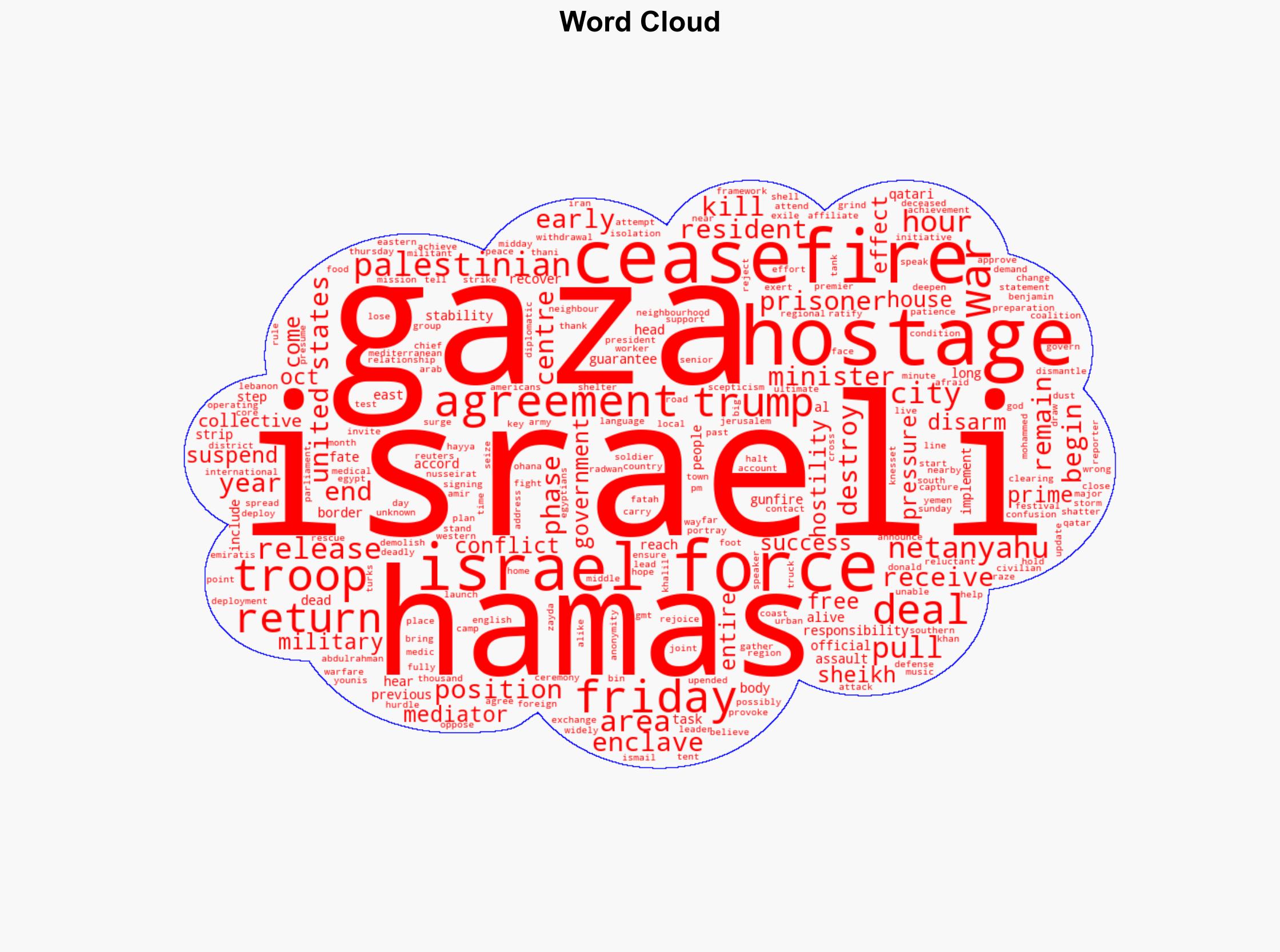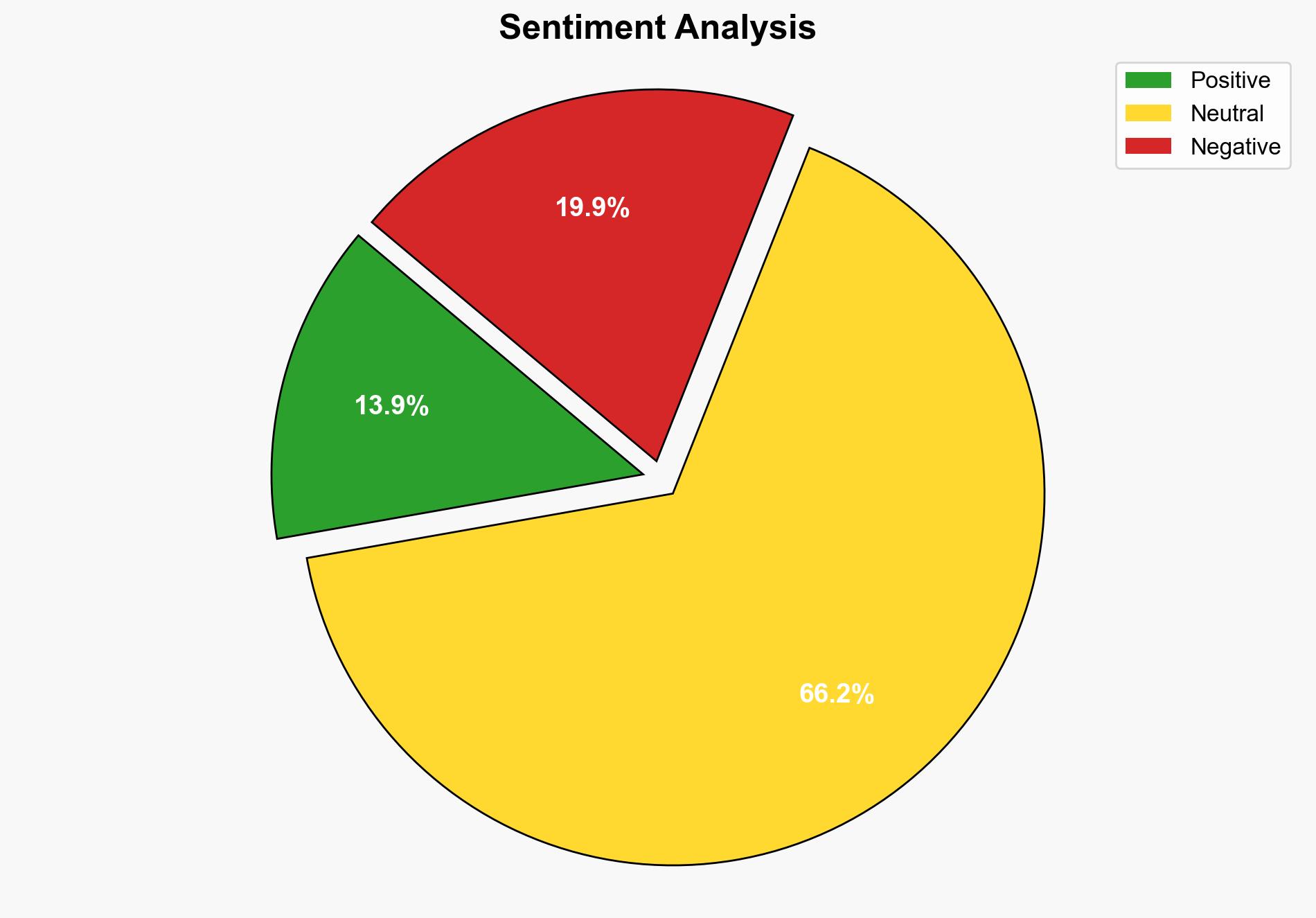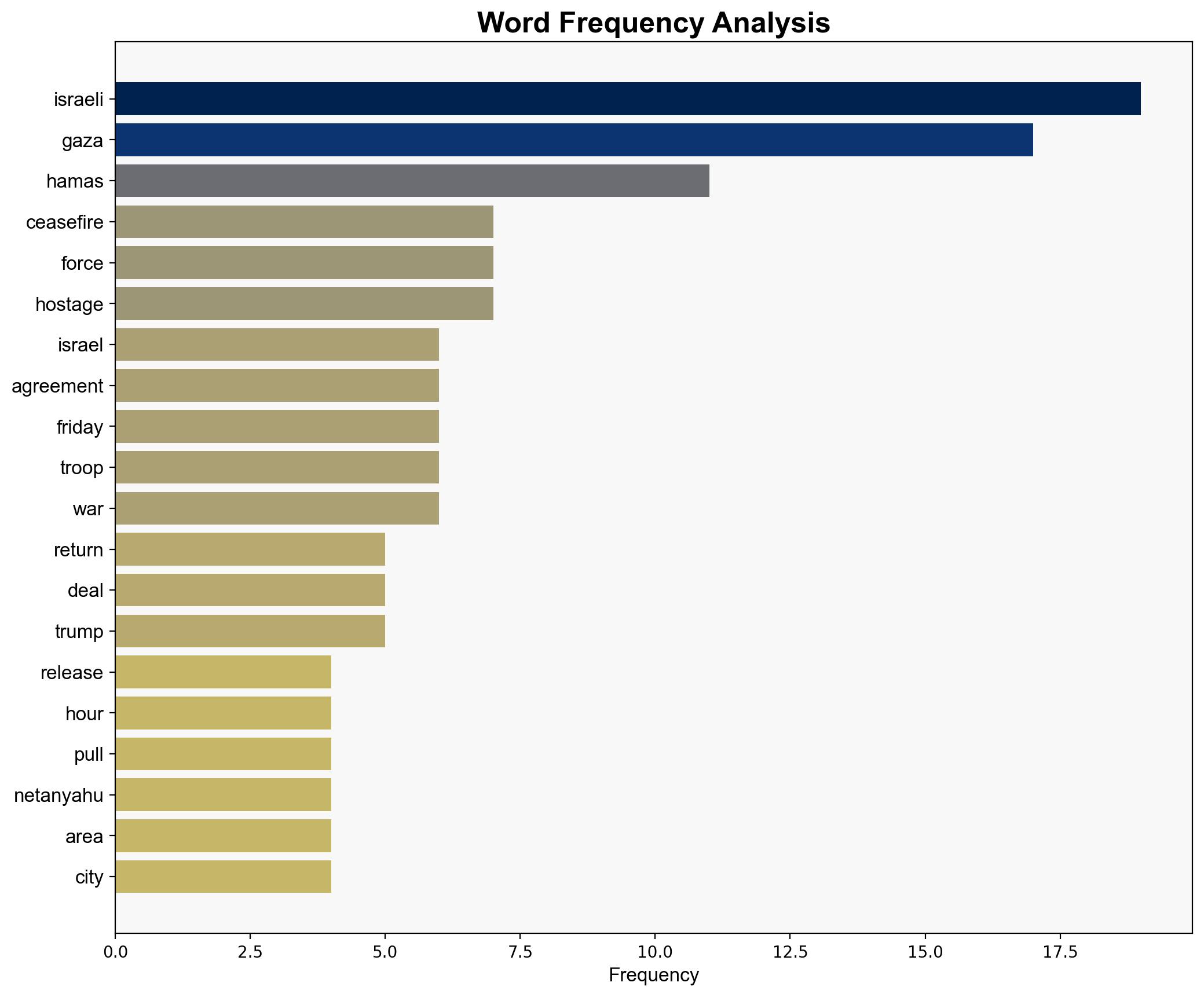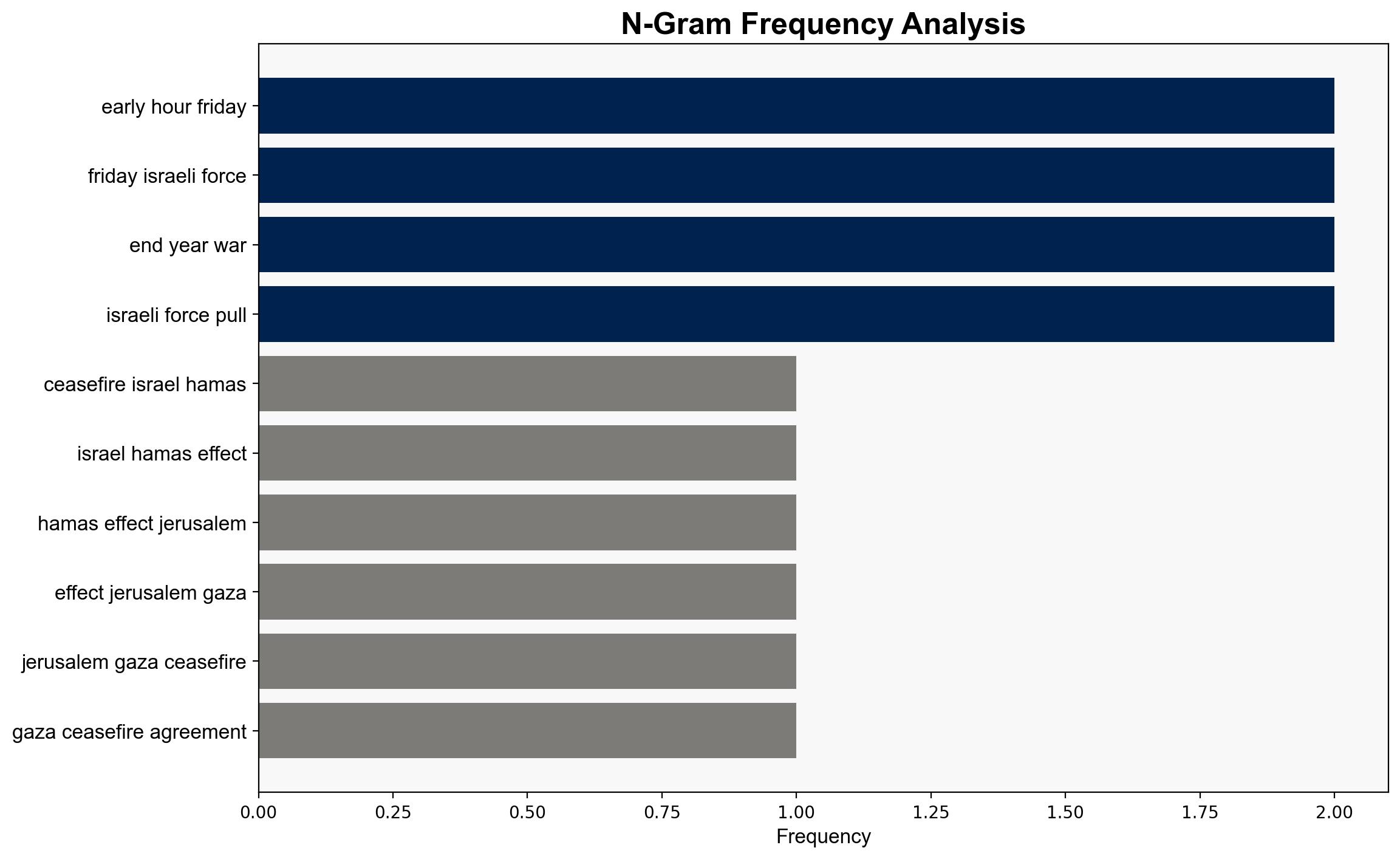Israeli forces start pulling back from parts of Gaza under ceasefire deal – CNA
Published on: 2025-10-10
Intelligence Report: Israeli forces start pulling back from parts of Gaza under ceasefire deal – CNA
1. BLUF (Bottom Line Up Front)
The ceasefire between Israel and Hamas is tentatively stabilizing the region, but significant uncertainties remain. The most supported hypothesis is that the ceasefire will hold temporarily, allowing for humanitarian relief and prisoner exchanges. However, the potential for renewed hostilities remains high due to underlying tensions and incomplete agreements. Confidence level: Moderate. Recommended action: Monitor compliance closely and prepare contingency plans for potential escalation.
2. Competing Hypotheses
1. **Hypothesis A**: The ceasefire will hold, leading to a sustained period of relative peace and the successful exchange of hostages and prisoners. This hypothesis is supported by the initial compliance with troop withdrawals and the involvement of international mediators like Qatar and the United States.
2. **Hypothesis B**: The ceasefire is fragile and will collapse, leading to renewed conflict. This is supported by ongoing tensions, the presence of unresolved issues such as the disarmament of Hamas, and the potential for provocations from either side.
Using ACH 2.0, Hypothesis A is more supported due to the immediate actions taken by both parties to adhere to the ceasefire terms, despite the underlying tensions.
3. Key Assumptions and Red Flags
– **Assumptions**: It is assumed that both parties are acting in good faith and that international mediators will continue to exert pressure for compliance.
– **Red Flags**: The lack of a comprehensive disarmament plan for Hamas and the potential for spoilers within both groups to disrupt the ceasefire.
– **Blind Spots**: The internal political dynamics within Israel and Hamas that may influence adherence to the ceasefire.
4. Implications and Strategic Risks
– **Geopolitical**: A breakdown in the ceasefire could lead to regional instability, drawing in actors like Iran and affecting Israeli relations with neighboring countries.
– **Economic**: Prolonged conflict could disrupt regional trade and economic recovery efforts in Gaza.
– **Psychological**: Continued uncertainty may exacerbate tensions among civilian populations, leading to increased radicalization.
5. Recommendations and Outlook
- Enhance monitoring of ceasefire compliance through international observers to ensure transparency.
- Facilitate dialogue between Israel and Hamas to address unresolved issues such as disarmament and political recognition.
- Scenario-based projections:
- Best Case: Ceasefire holds, leading to long-term peace negotiations.
- Worst Case: Ceasefire collapses, resulting in a full-scale conflict.
- Most Likely: Ceasefire holds temporarily, with sporadic violations.
6. Key Individuals and Entities
– Benjamin Netanyahu
– Donald Trump
– Khalil al-Hayya
– Sheikh Mohammed bin Abdulrahman Al Thani
7. Thematic Tags
national security threats, regional focus, conflict resolution, international mediation





